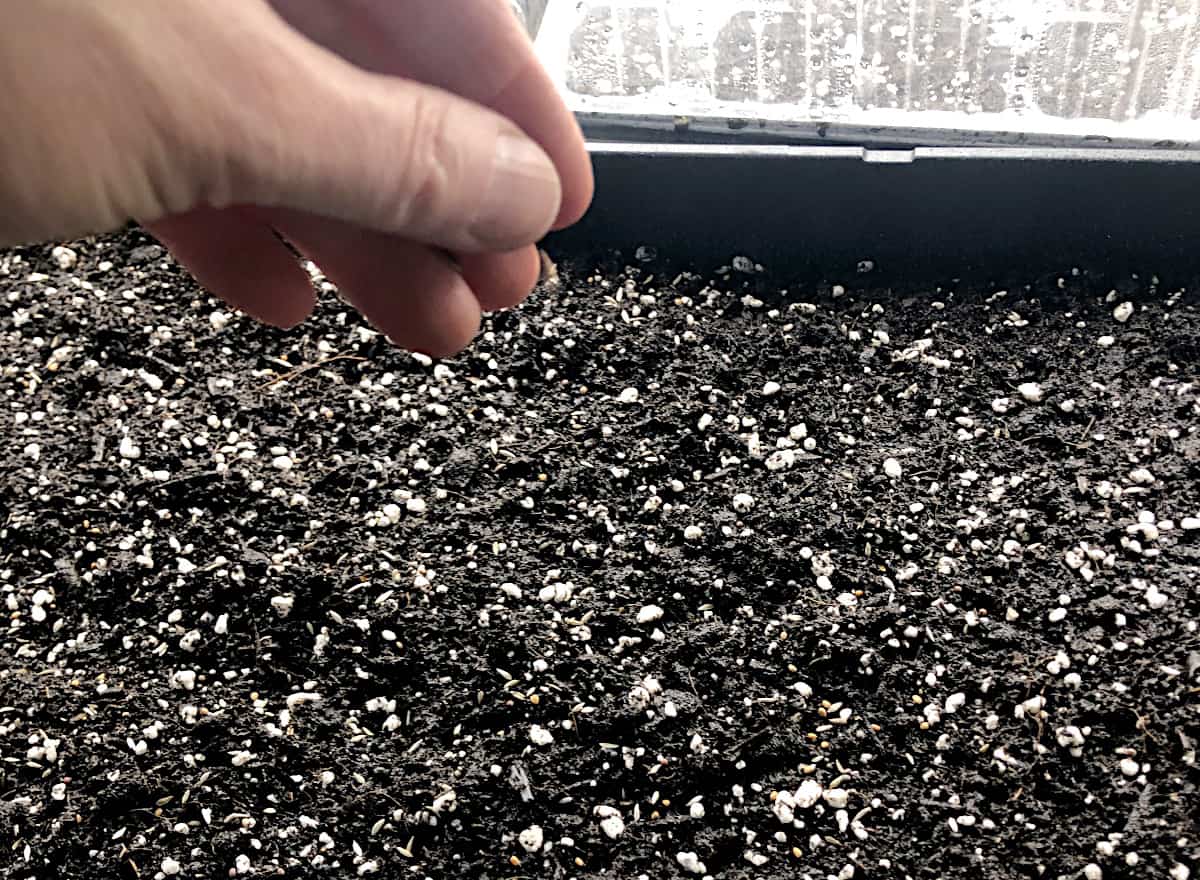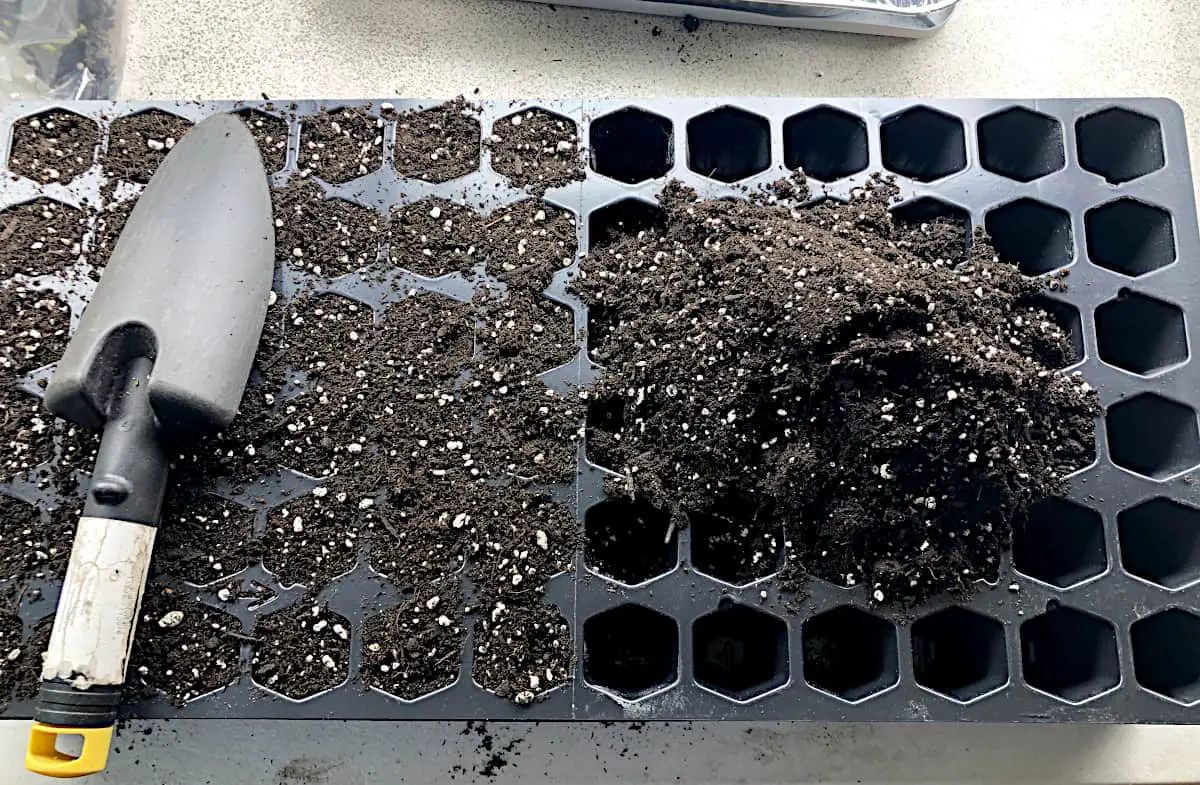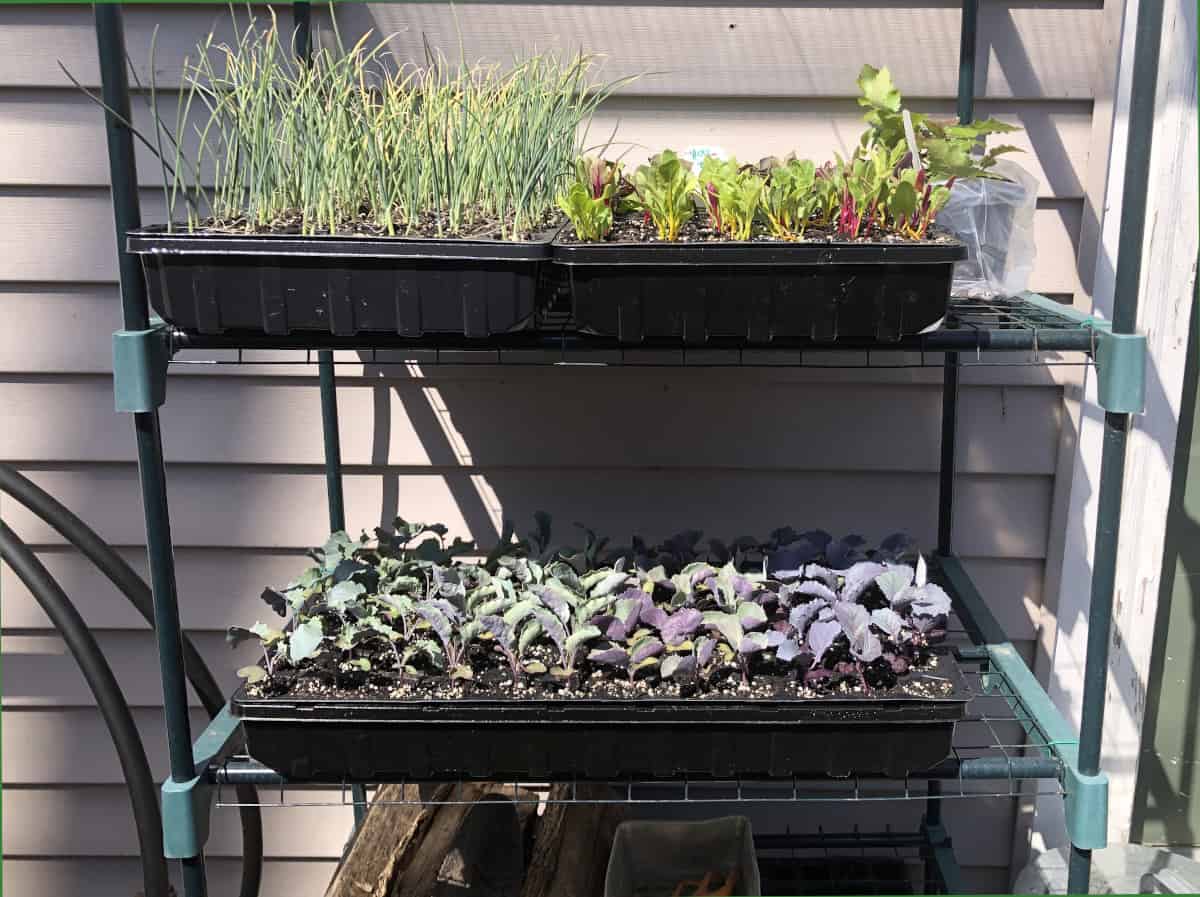Not only your seedlings can be started in April, in zone 6, but also many cool-weather mature seedlings can be directly planted outdoors. These mature seedlings can be now transplanted directly in the garden! As the seedlings were growing under the grow lights in a controlled environment, they need to be hardened off before they are transplanted outdoors.
April is not too late to start seedlings in zone 6. It is actually a great time to start them indoors, and outdoors. In April, in zone 6, seedlings of cold-weather crops can be started in seed trays or direct seed. You can start broccoli, cauliflower, cabbage, arugula, Swiss chard, lettuce, peas, Bok choy, kale, and celeriac, indoors in seed trays or outdoors by direct seeding if you prefer to do so. Direct seed outdoor root crops including carrots, parsnips, radishes, turnips, also peas, lettuce, kohlrabi, kale, cabbage, cauliflower, broccoli, Swiss chard, arugula, and Bok choy. Not only cold-weather seedlings can be started in April in zone 6, but also warm-weather seedlings can be started like tomatoes and bell peppers. Warm-season seedlings can be however started indoors to speed up the germination process as the seeds need warmer soil to germinate.

Before the seeds are sowed make sure the seeds you are actually sowing are viable. A viable seed is a seed that is alive and will germinate. Non-viable seeds are dead and will not germinate. If you have seeds that have been sitting on the shelf for some time, or if you change the seed source and would like to find out how viable the seeds are, you can test them for viability. Read here How to find out if the seeds are viable. In this article, I will walk you through simple steps of how to can find out the viability of the seeds you have.
Can non-viable seeds germinate?
If you start the seeds in April and wish to speed up the germination process but do not know how, let me invite you to read my other article titled How to germinate seeds faster. There are several ways to help seeds germinate faster to buy you some time and thus have the seedlings out in the ground faster.
How to start seeds
Start the seeds in a seed tray indoors under grow lights or on the south-facing sunny windowsill. Seeds can be also started outdoors direct-seeded or in seed trays covered with a humidity dome. The best is to use the seed trays that come with humidity domes to speed up the germination process. Seeds can be sowed in a seed-starting mix or a potting mix if starting them in seed trays. Fill the seed trays of your choice with the soil and sow the seeds by following the sowing instructions on the seed packet. Cover the seeds with soil and water them thoroughly. Water with mist or a gentle flow. Ensure the soil with the seeds inside does not go dry.

If the soil with the seeds dries out it can slow down the germination process or the sprouting seed can wither and die. Keep the soil moist all the time. Do not overwater the seeds. The soil should be moist but not dripping wet. The seed tray should not sit in water. If the seeds are overwatered, they can rot. Excessive watering can encourage mold growth as well.
To make you even more confident in sowing seeds and caring for seedlings, visit How to start seeds and care for seedlings.
If you start your garden without grow lights and have no space indoors or your home does not have a sunny windowsill you could use to start the seeds and grow seedlings, you can start the seeds outdoors. I started seeds outdoors before I got the grow lights. You can get inspired to start the seeds outdoors by reading my other post, The best way to start seeds outside.
How to start seeds with minimum space
Once your seedlings are ready and fully mature, they can be planted outdoors. If you prefer to buy the seedlings, you can do so and plant them outdoors in April. There is one more important step to do before the seedlings are planted outdoors. They need to be hardened off.
If you bought the seedlings from the store and they have been kept outside, they might not need hardening off because they probably were already hardened off. But if you buy the seedlings and they were not hardened off, they too can not skip this step.
In my zone 6, in one of the northern states, we get most of the seedlings at the store from the southern states. The seedlings are brought in from much warmer zones or have been grown in a controlled environment such as a warm greenhouse. Such seedlings need to be hardened off before they are transplanted outdoors.
What is hardening off the seedlings?
Hardening off the seedlings means preparing the seedlings for transplanting outdoors. Seedlings were sowed indoors in a controlled, warm, and comfortable environment. Before the fully mature seedlings are planted in their permanent place outdoors, they need to acclimatize themselves. Outdoors will be exposed to the weather elements like rain, wind, harsh sun, and such. Hardening them off is helping the seedlings to acclimatize to the uncontrolled environment.

How to harden off the seedlings before transplanting them outdoors?
Start to harden off the seedlings about 1-2 weeks before transplanting them outdoors. Take the seedlings outside under a shade and keep them outdoors for a couple of hours. Increase each day the hours they stay outdoors and add sunshine as well. After a week or two your seedlings should be fully ready to be transplanted outdoors.
What if the seedlings are planted outdoors without hardening off?
If you do not harden off the seedlings before they are planted outdoors, they might get stressed. They might get burned by the sun, they can suffer the shock caused by the wind, and cold. They will need more time to recover from the stress and it will slow them down from proper growth. It might take weeks for them to recover and some might not recover at all. If you expose the seedlings to the elements and uncontrolled environment gradually, they will have a greater chance to adapt to grow firmer.
A GOOD READ
What are some common seed-starting problems?
Easy vegetables to start from seed indoors

